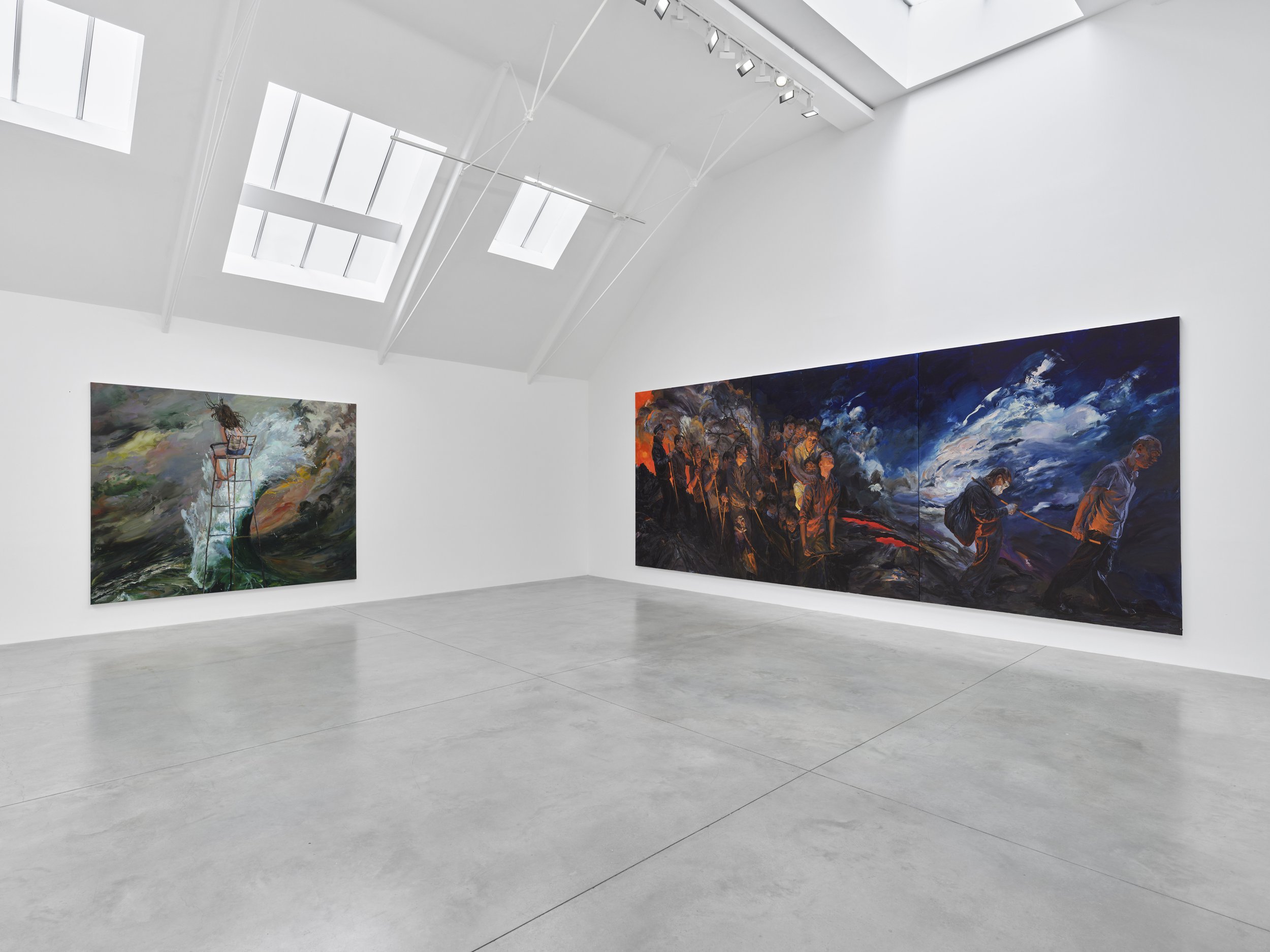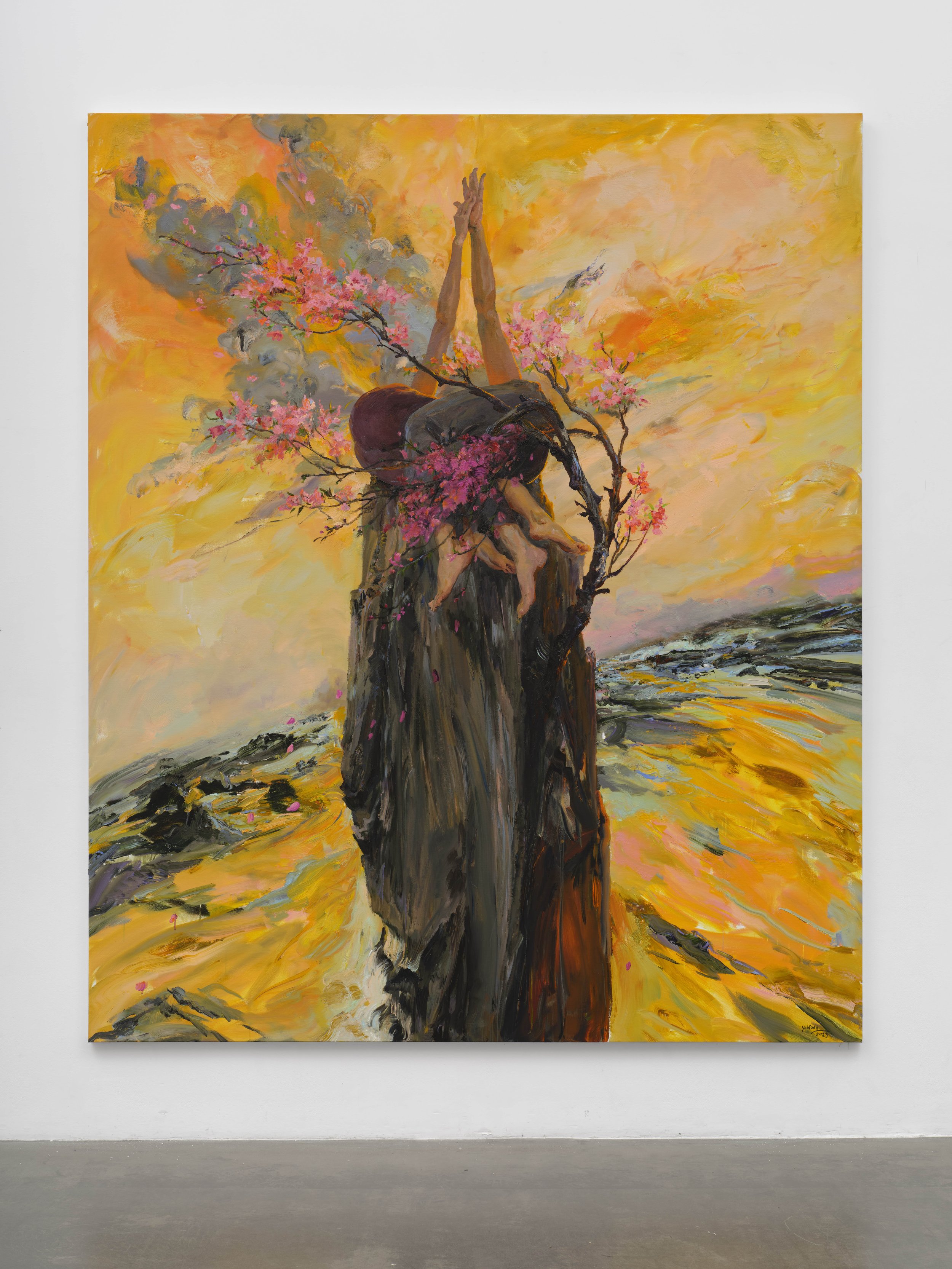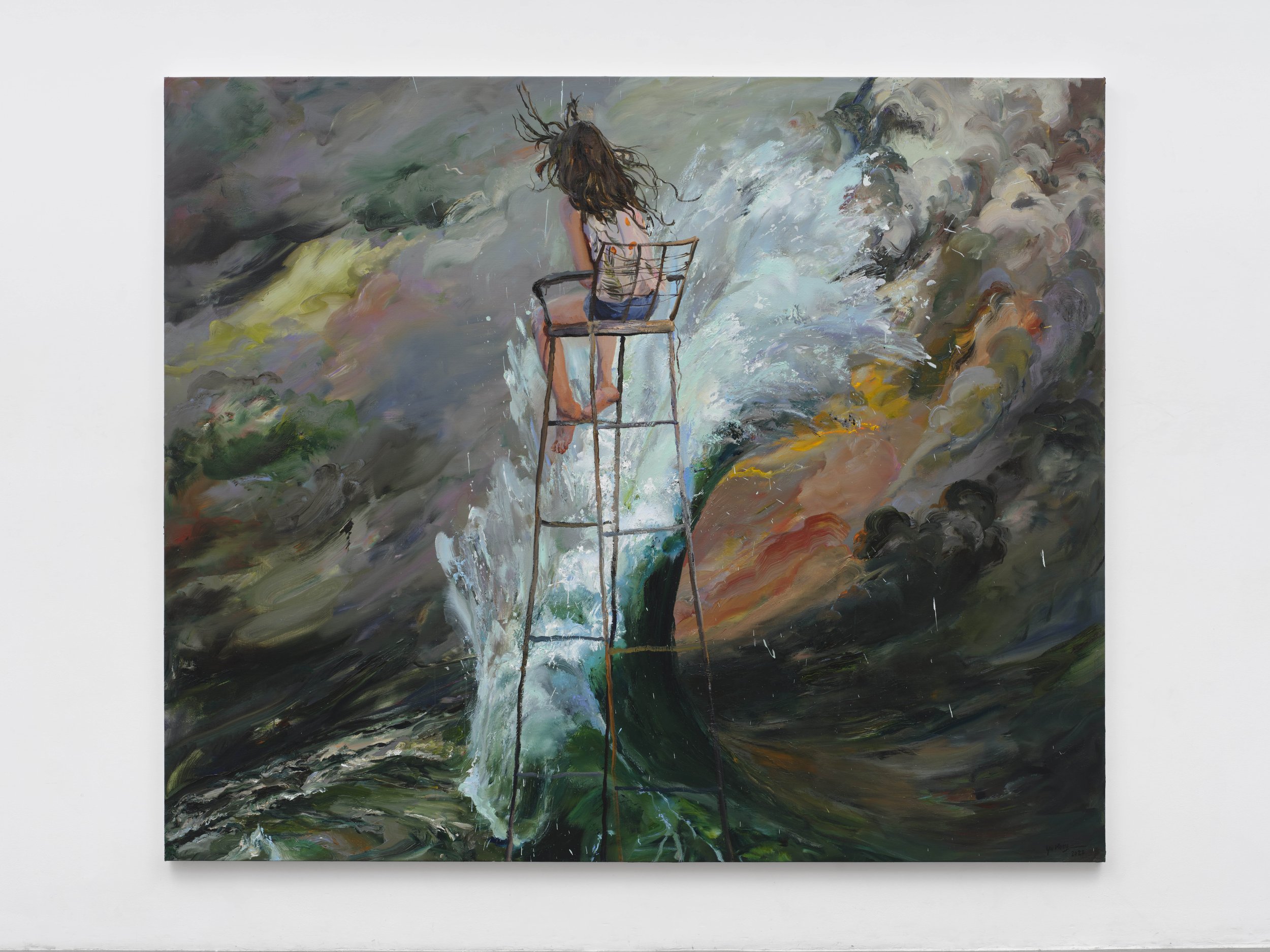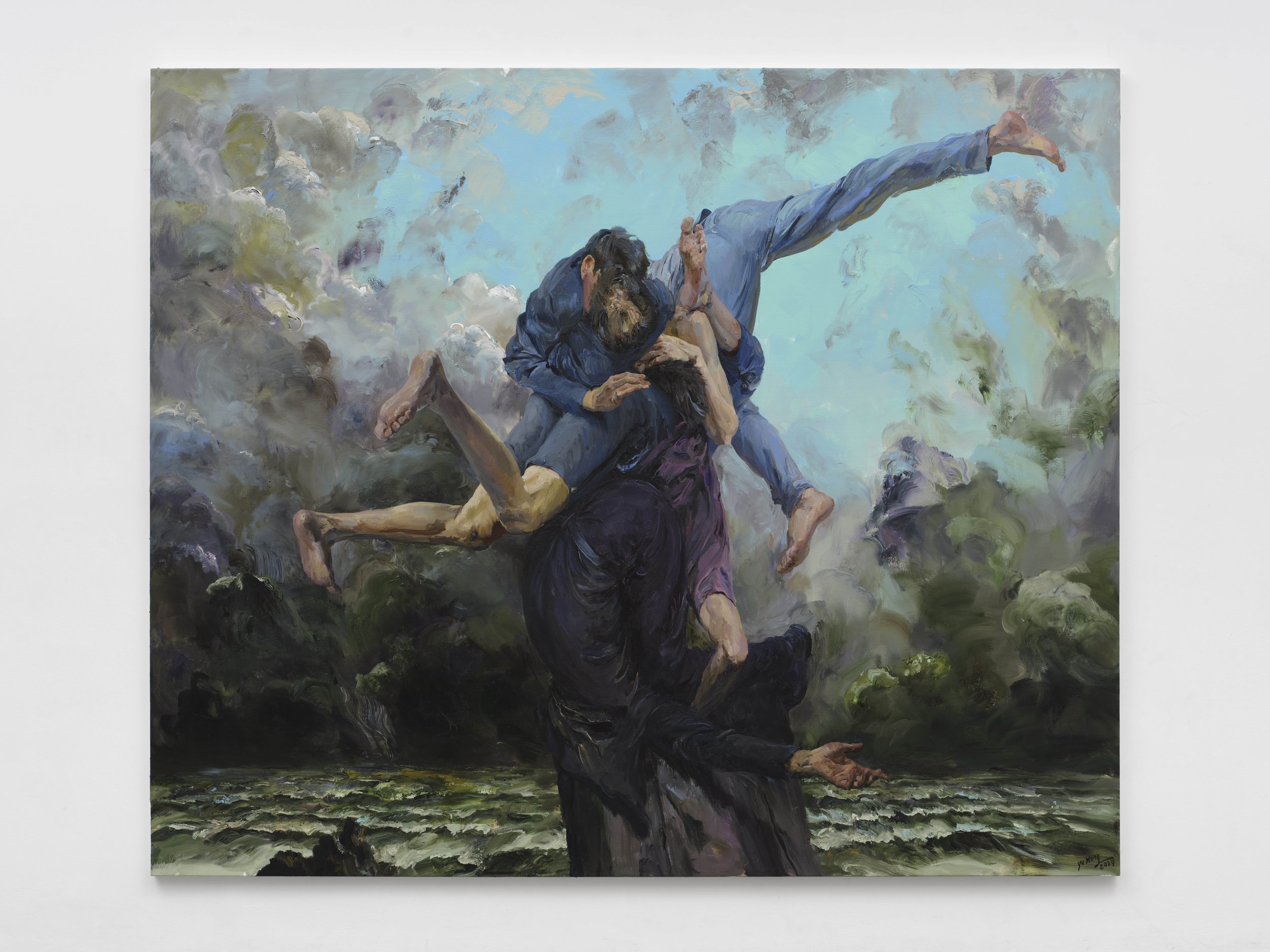Yu Hong: Islands of the Mind
Installation view: Yu Hong, Islands of the Mind, Lisson Gallery London (27 September – 9 November 2024) © Yu Hong, Courtesy Lisson Gallery.
For her first solo exhibition in London, Yu Hong presents a series of large-scale new acrylic-on-canvas paintings. Based between Beijing and New York, the artist, who has been described as one of the most important voices of her generation, unveils a selection of poignant and poetic paintings that each explore a distinctive state of mind or consciousness.
Inspired by Arnold Böcklin Island of the Dead (1880-1901), this suite of paintings expands on the body of work unveiled in Yu Hong’s solo exhibition at the SCAD Museum of Art, Savannah in 2023, and follows her first major exhibition in Europe, where she transformed the Chiesetta della Misericordia in Venice through a series of new works organized by The Asian Art Initiative of the Guggenheim Museum, New York.
Yu Hong Island of Love, 2023 Acrylic on canvas 300 x 250 x 4.5 cm 118 1/8 x 98 3/8 x 1 3/4 in © Yu Hong, Courtesy Lisson Gallery
For this presentation, Yu Hong focuses on the concept of psychological landscapes, with each painting embodying an emotion or experience that unites us all: be it love, expectation, survival, oblivion or repose. In each of these works we witness the complexity of these experiences; the light with the dark. In Island of Love (2023), we discover a tender, seemingly blissful scene with two entwined figures intimately cocooned within a pink blossom tree, the lovers’ outstretched arms uniting above them in a symbol of hope. Yet on a towering flowering foundation they are alone in a vast expanse of water. The foreboding sea, with its waves pounding against the rock, becomes one with the sky, painted in what could be perceived as a heavenly, golden glow or a tempestuous volatility. In Island of Life (2024) there is a similar evocative glow, with two reclining figures perhaps Adam and Eve, with the lush apple tree and exotic birds beside them only visible by their legs. The painting, depicting equally solitary figures with just the sea beneath them, can be seen as a metaphor for paradise and the contradictions of life: the balance between joy and suffering, strength and weakness, temptation and control, love and loss.
Yu Hong Island of Expectation, 2024 Acrylic on canvas 250 x 300 x 4.5 cm 98 3/8 x 118 1/8 x 1 3/4 in © Yu Hong, courtesy Lisson Gallery
Like many artists, Yu Hong gravitates toward the ocean as a recurring motif, symbolising depth, beauty, constant change, and the undercurrent layers of emotion. In Island of Expectation (2024) we see a young female figure, with her back to the viewer, sitting atop a high, laddered chair gazing out at a dramatic, turbulent sea, captured at the moment of the eruption of a powerful wave. In many of there is a sense that the character is on the edge, suspended in time, and often confronted with an extreme weather pattern, from rising sea levels to blazing tornados. In Island of Repose (2024) a lone female figure shelters her face with her arms as the sea prepares to wash over her; in Metropolis Island (2024), three adolescent girls converse on spiral staircases which surround a broken chimney while the world combusts beneath them; and in Island of Oblivion (2024) a group of contorted figures find refuge behind a rock, their bodies merging with their form of protection.
The exhibition also features Night Walk (2023), a monumental three-panel work referencing Pieter Bruegel the Elder’s The Blind Leading the Blind (1568). In this biblical, otherworldly painting, a line of adults bearing sticks with closed eyes cross a burning volcanic landscape, one of them riding a tricycle holding a group of wide-eyed children, with a screaming, chained monkey trailing behind. The procession, following two other (also blind) figures leading the way, impels the viewer to understand the individuals also as an entity as a group endeavour with a shared destiny.
Yu Hong Island of Survival, 2024 Acrylic on canvas 250 x 300 x 4.5 cm 98 3/8 x 118 1/8 x 1 3/4 in © Yu Hong, Courtesy Lisson Gallery
One of the final and most dramatic works in the exhibition is Island of Survival (2024), depicting a frenzy of figures wrestling, twisted and writhing atop a platform set against a rendering of The Sea (c.1865). There is a sense of instability and unpredictability, heightened by the dark, tumultuous sea, but a brief break in the sky serves as a nod to the possibility of personal experiences living between East and West, witnessing the considerable changes that have taken place in contemporary life during this time, this new body of work reflects on our shifting, precarious state and provides a cathartic opportunity to both immerse ourselves in the deepest, darkest waters, and return to witness an opening in the clouds.
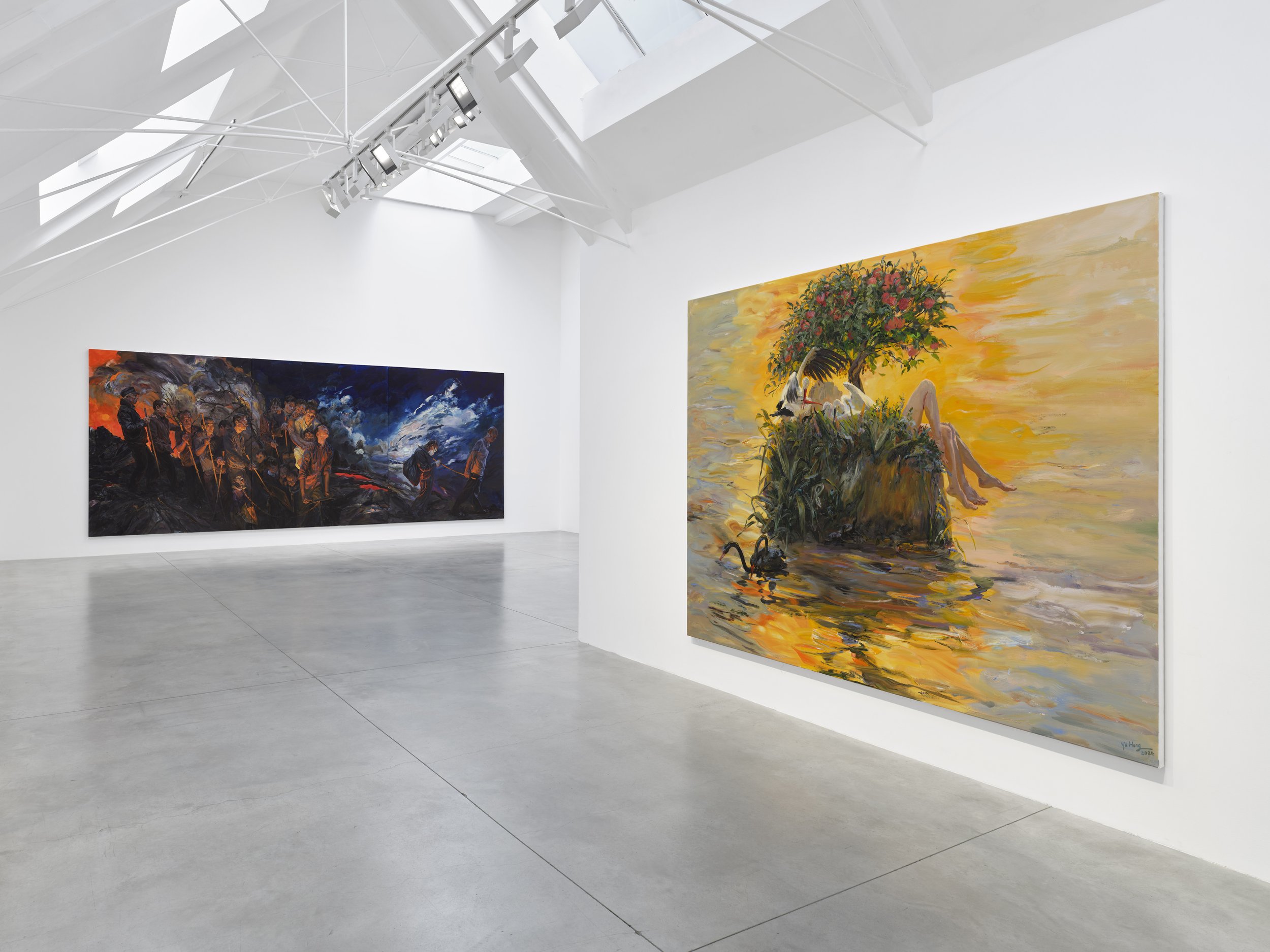
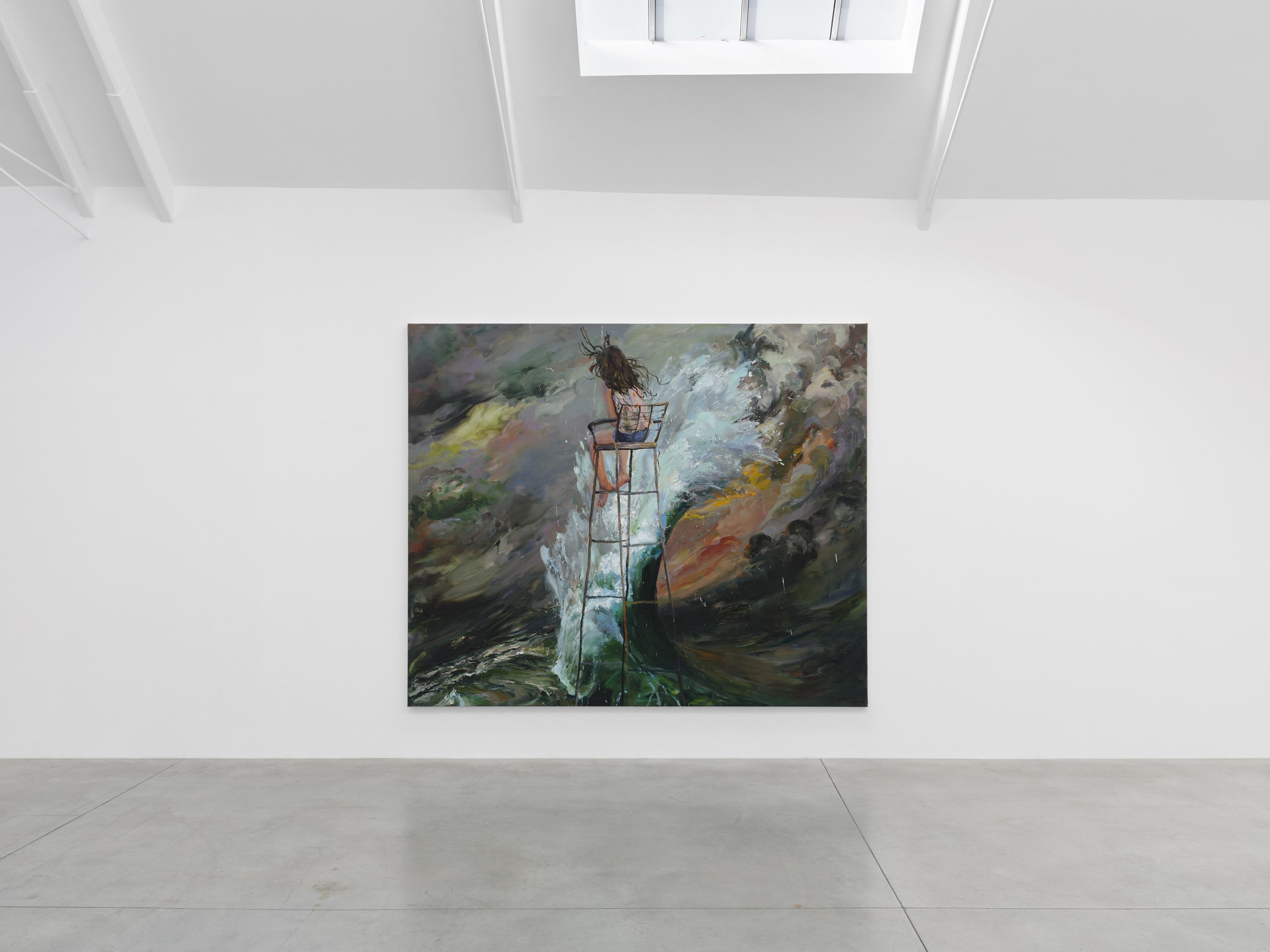
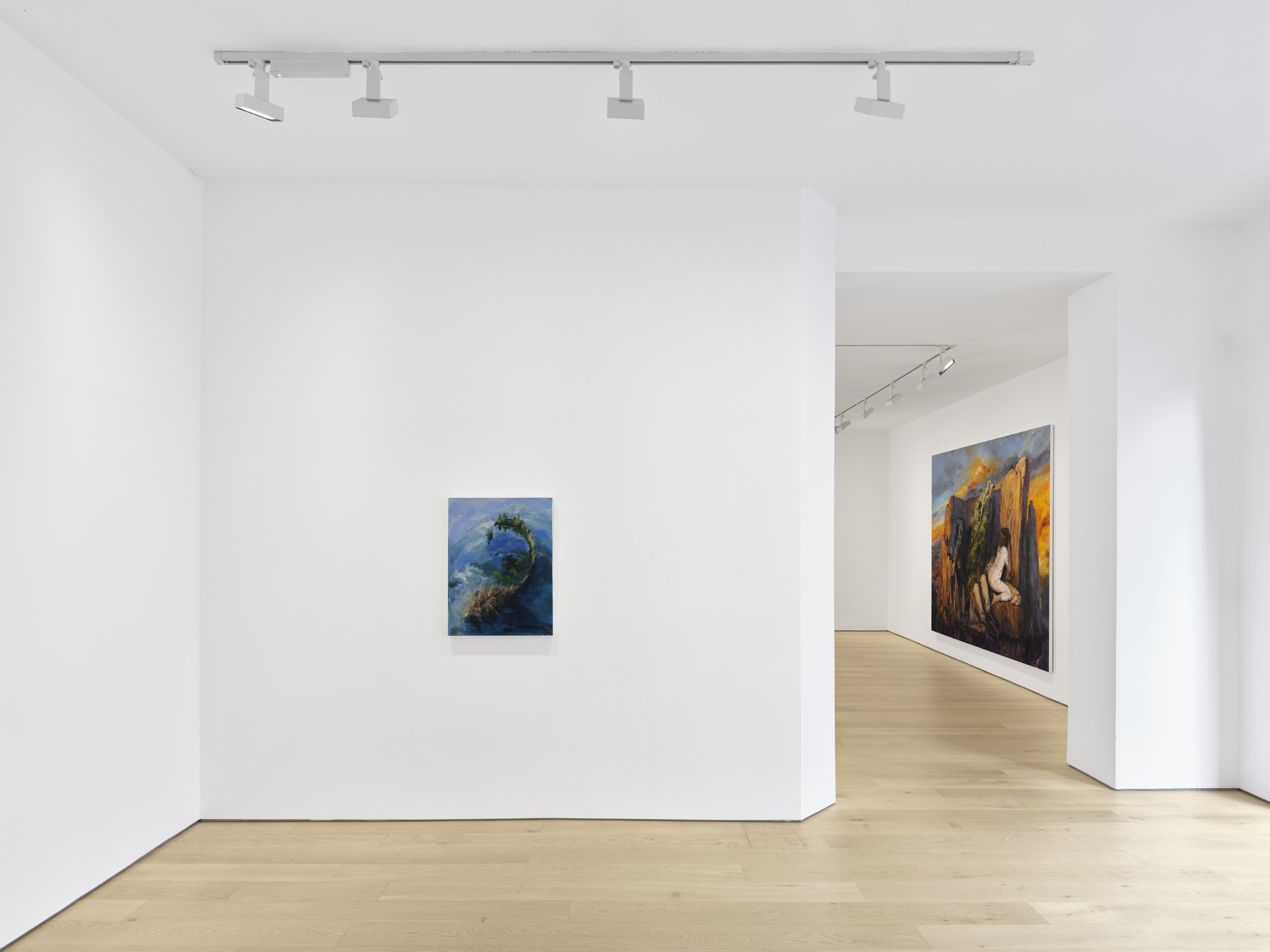
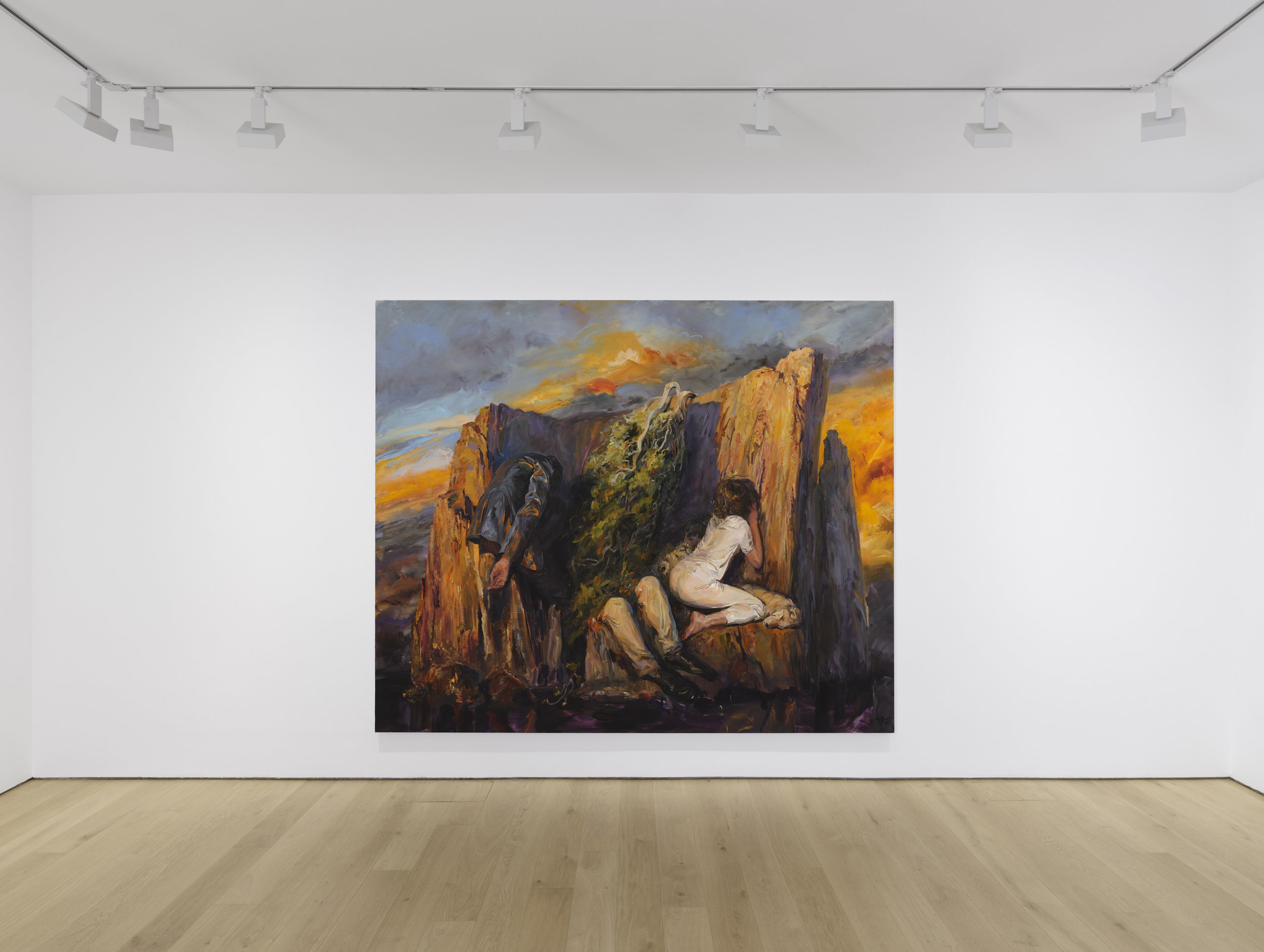
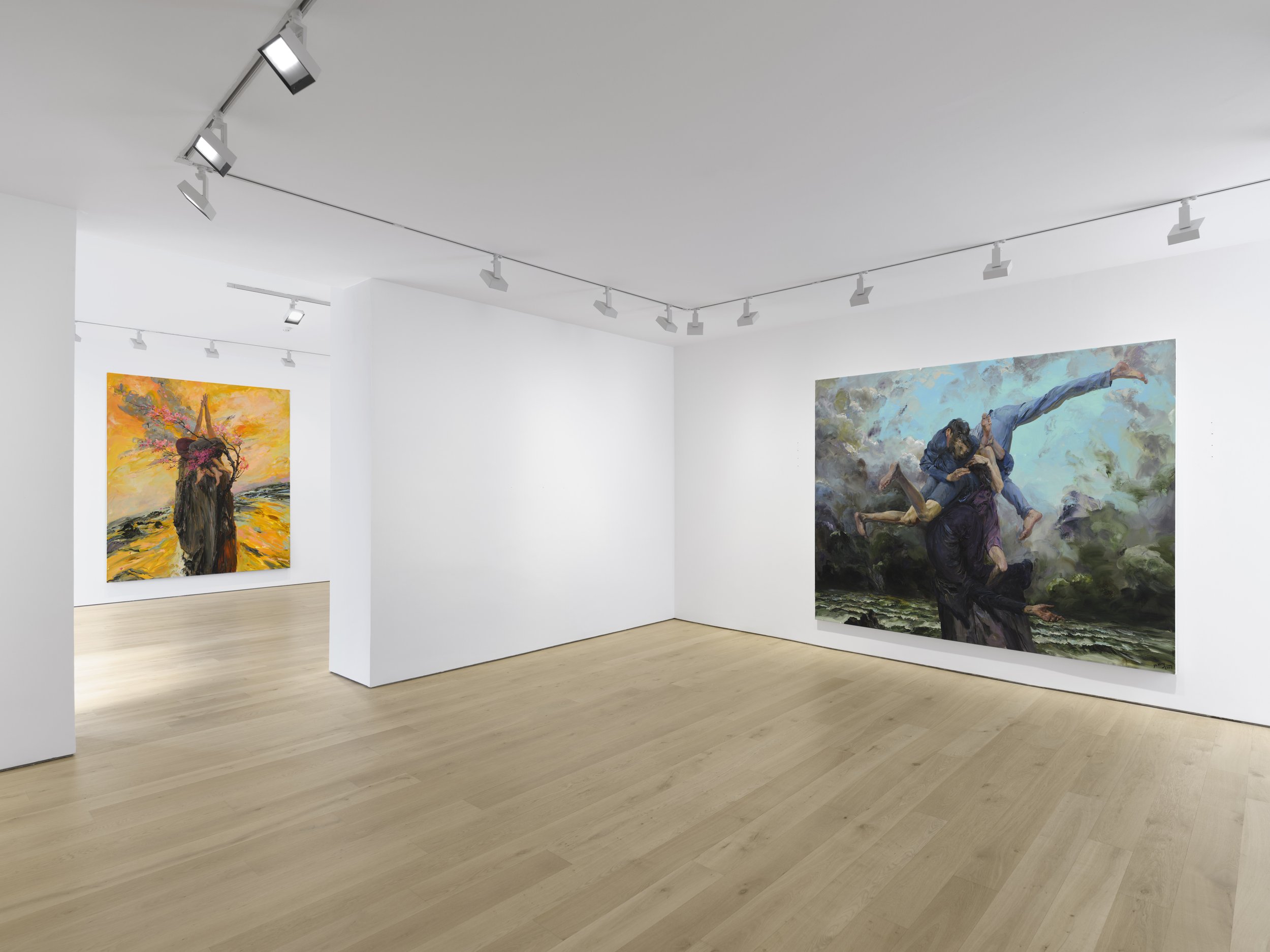
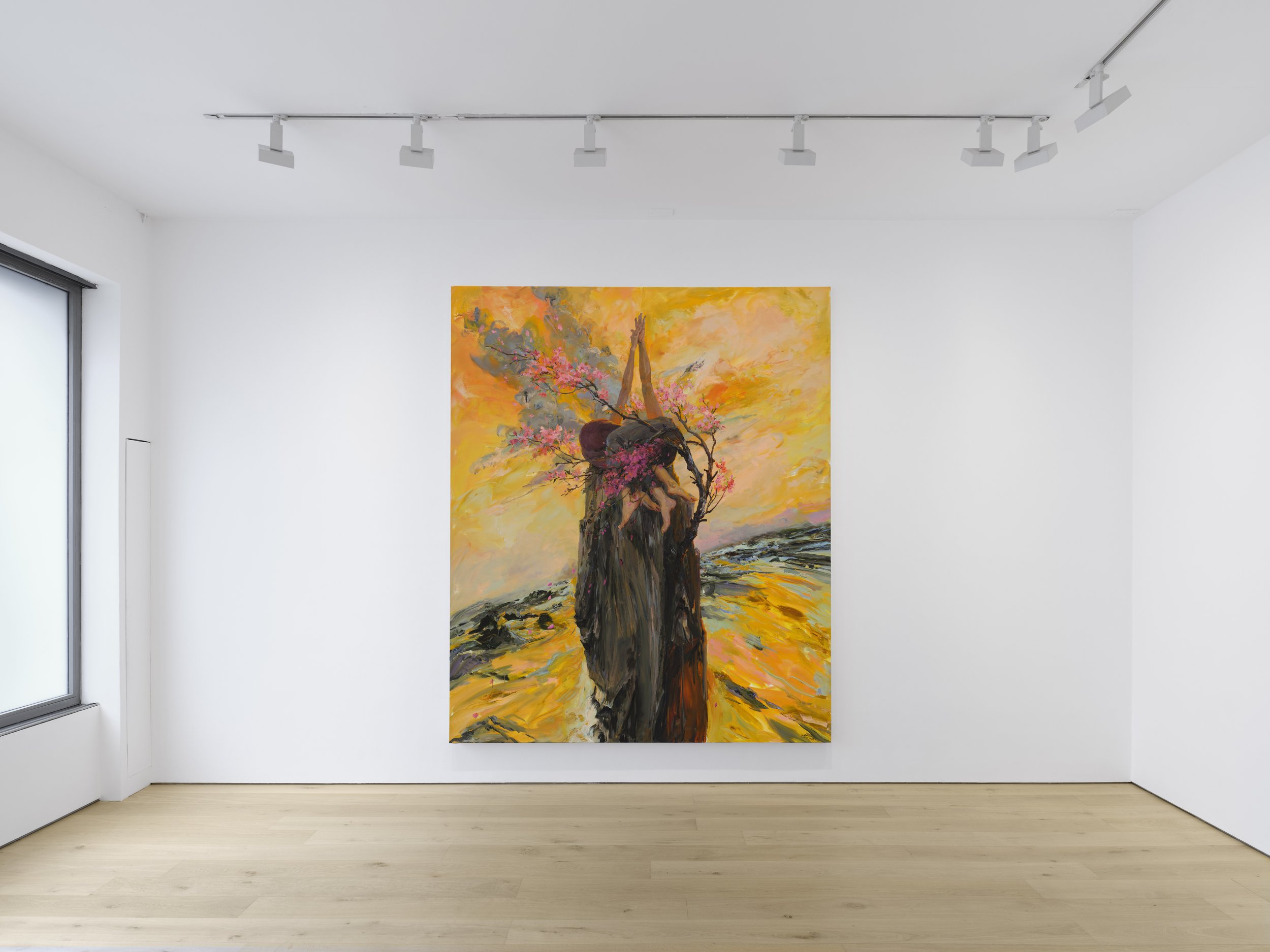
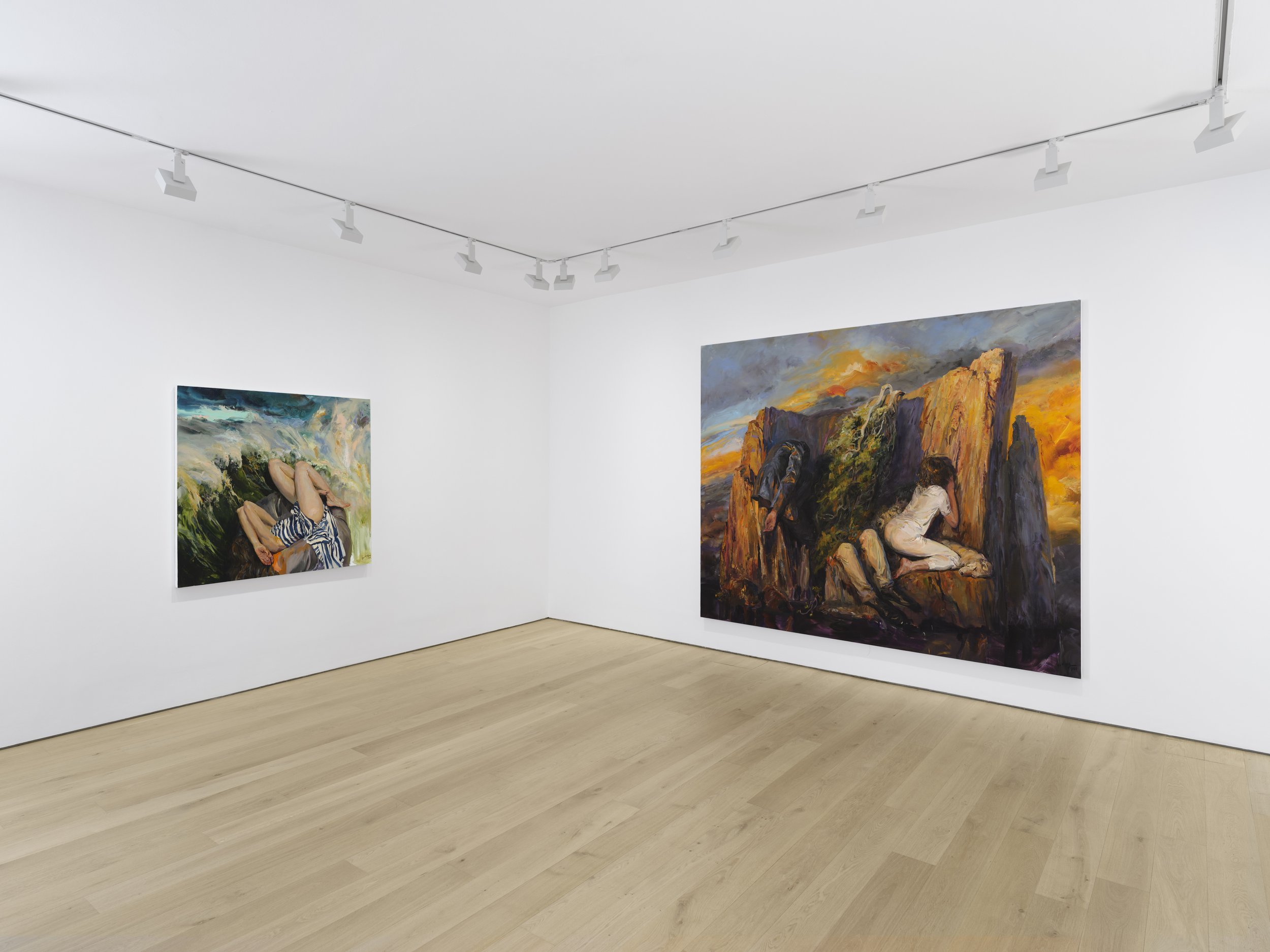
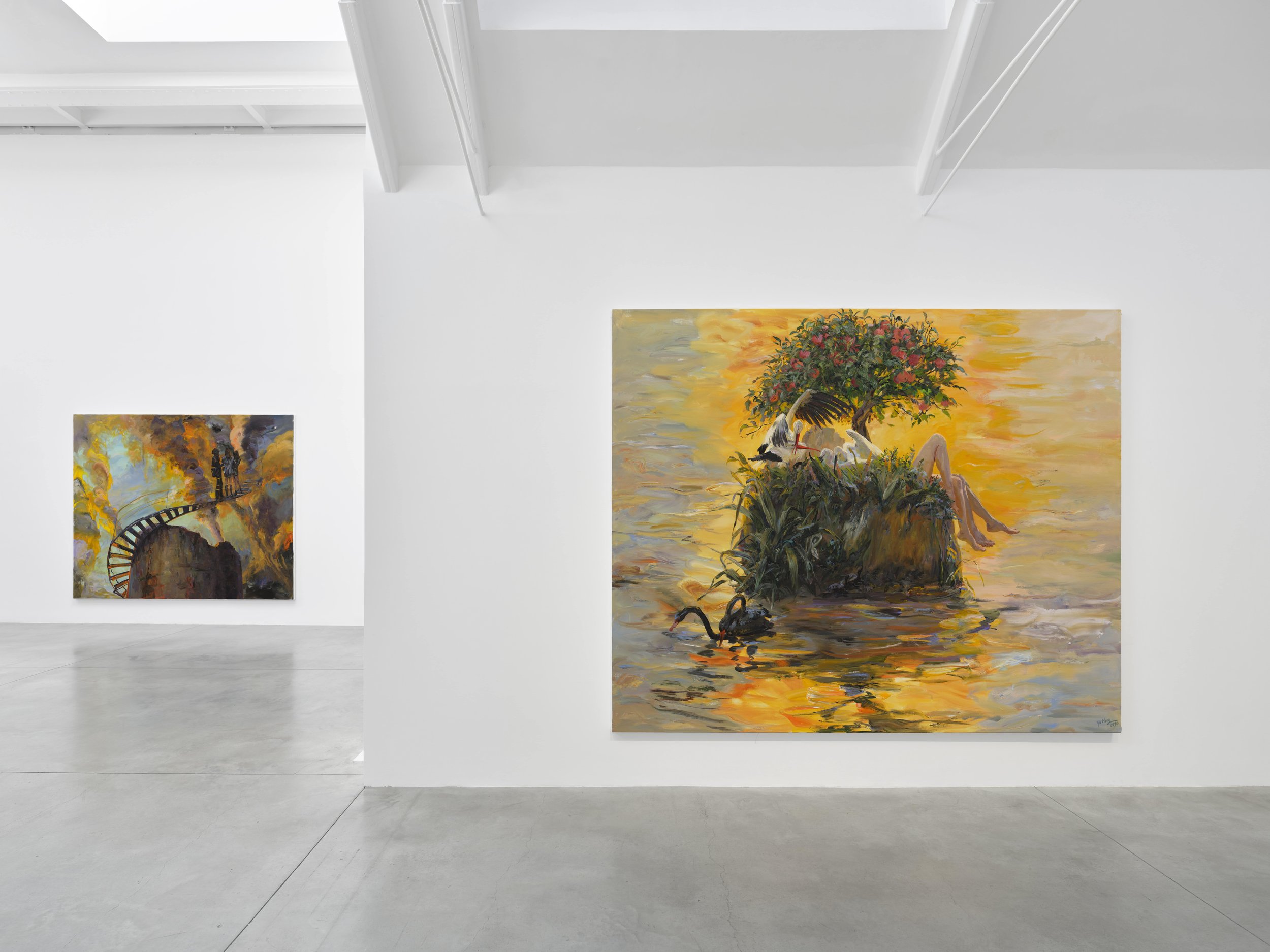
Installation view: Yu Hong, Islands of the Mind, Lisson Gallery London (27 September – 9 November 2024) © Yu Hong, Courtesy Lisson Gallery.
About Yu Hong
Portrait of Yu Hong, from 'Women in Motion' by Kering 喻红, 2021. Photographer ©️ gregmei. Courtesy Lisson Gallery
A painter of epic scenes and intimate moments, Yu Hong constructs modern-day fables and complex, allegorical compositions by channelling historical, narrative- caught in extremis: floating on clouds, climbing vertiginous mountains or walking through flames as if to hell all variously suffering the ecstasies and tribulations of existence. Yet her fantastical worlds are inhabited by real people, featuring portrayals of friends, acquaintances and family members, revealing a personal and touching dimension to the sweeping cycles of paintings that she produces over long periods of time. Her lifelong autobiographical project, Witness to Growth, begun in the 1990s as a series of diptychs, charts her own life juxtaposed with news clippings from each era, now with the addition of her daughter’s milestones running alongside her own. As well as elevating people and their bodies to otherworldly, uncompromising and often female celestia intense lows of depression, urban deprivation and social alienation, as in her apocalyptic Earth and Heaven (2014), or when tumbling from her Ladder to the Sky (2008). The latter image not only borrows from a medieval precedent (The Ladder to Paradise in the Egyptian Monastery of St Catherine), but utilises a gold background, which she has employed since 2010, in order to iconise and foreground her cast of modern- ake in the styles, ideologies and ambitions of both Eastern and Western Old Masters, from cave paintings to Renaissance altarpieces recently echoing Géricault’s Raft of the Medusa, for the piled-up mound of humans and animals in Pyramid Blind Leading the Blind, across three panels of her blazing Night Walk handling can also scale down to the depiction of an individual lost in thought, or to a pair of hands locked in a gesture of tender internalisation.
Yu Hong was born in 1966 in Xi’an, China. In 1984, she studied oil painting at the Central Academy of Fine Arts (CAFA) in Beijing and graduated from the oil painting department in 1988. Since 1988 she has been a teacher at CAFA. Yu Hong’s first major exhibition in Europe, ‘Yu Hong: Another One Bites the Dust’ opened at the Chiesetta della Misericordia in Venice as a special off-site exhibition of the Asian Art Initiative of the Guggenheim Museum, New York in April 2024. Her first major American museum show was held at SCAD Museum of Art, Savannah, GA, in 2023 and her work was featured in ‘Art and China after 1989: Theater of the World’ (2017) at the Solomon R. Guggenheim Museum, New York. Recent solo exhibitions in China include: ‘The World of Saha’ (2019) at Long Museum, Shanghai; ‘Garden of Dreams’ (2016) at the CAFA Art Museum, Beijing; ‘Concurrent Realms’ (2015) at the Suzhou Museum; ‘Golden Horizon’ (2011) at the Shanghai Art Museum, Shanghai and ‘Golden Sky’ (2010) at the Ullens Center for Contemporary Art, Beijing.
About Lisson Gallery
Lisson Gallery is one of the most influential and longest-running international contemporary art galleries in the world. Today the gallery supports and promotes the work of more than 60 international artists across two spaces in London, two in New York, one in Shanghai and Beijing, as well as a forthcoming gallery in Los Angeles, opening 15 April. Established in 1967 by Nicholas Logsdail, Lisson Gallery pioneered the early careers of important Minimal and Conceptual artists, such as Art & Language, Carl Andre, Daniel Buren, Donald Judd, John Latham, Sol LeWitt, Richard Long and Robert Ryman among many others. It still works with many of these artists as well as others of that generation from Carmen Herrera to the renowned estate of Leon Polk Smith. In its second decade the gallery introduced significant British sculptors to the public for the first time, including Tony Cragg, Richard Deacon, Anish Kapoor, Shirazeh Houshiary and Julian Opie. Since 2000, the gallery has gone on to represent many more leading international artists such as Marina Abramović, Ai Weiwei, John Akomfrah, Susan Hiller, Tatsuo Miyajima and Sean Scully. It is also responsible for raising the international profile of a younger generation of artists led by Cory Arcangel, Ryan Gander, Van Hanos, Hugh Hayden, Haroon Mirza, Laure Prouvost, Pedro Reyes, Wael Shawky and Cheyney Thompson.
Yu Hong - Islands of the Mind opened on September 27th and will close on December 14th at 67 Bell Street, London. There was an opening on the 26th of September from 6 – 8pm.
For more information about this exhibition and others, please visit the Lisson Gallery here. The gallery can also be found on Facebook, YouTube, and Instagram.
